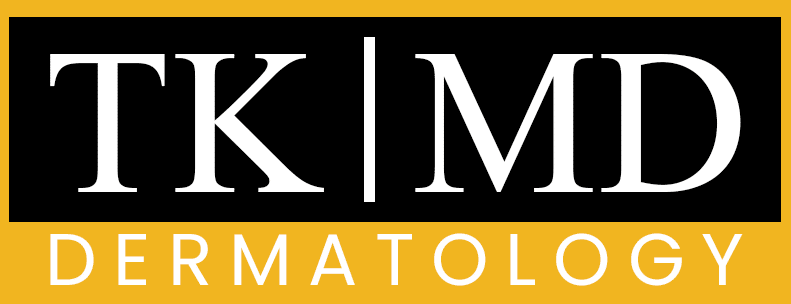Rosacea is a chronic skin condition that affects millions of people worldwide, often manifesting as facial redness, visible blood vessels, and sometimes even acne-like breakouts. As we delve into the symptoms, we find that rosacea can present itself in various ways, including flushing, persistent redness, and the development of small, red bumps or pustules. In some cases, individuals may also experience a burning or stinging sensation on their skin, particularly when exposed to certain environmental factors.
The condition can be both physically uncomfortable and emotionally distressing, leading many of us to seek answers and effective management strategies. The causes of rosacea remain somewhat elusive, but research suggests a combination of genetic, environmental, and lifestyle factors may contribute to its onset. We know that certain triggers can exacerbate symptoms, including sun exposure, hot beverages, spicy foods, and stress.
Additionally, there is evidence to suggest that an overactive immune response may play a role in the development of rosacea. As we continue to explore the underlying mechanisms of this condition, it becomes increasingly clear that understanding its multifaceted nature is crucial for effective management and treatment.
Key Takeaways
- Rosacea is a chronic skin condition that causes redness and visible blood vessels in the face, as well as bumps and pimples.
- Traditional treatments for rosacea include topical creams, oral antibiotics, and laser therapy to reduce redness and inflammation.
- Current research is focused on developing new topical treatments that target the underlying causes of rosacea, such as inflammation and blood vessel abnormalities.
- Oral medications and antibiotics are often prescribed to reduce inflammation and control the bacteria associated with rosacea flare-ups.
- Laser and light therapies can help reduce redness and visible blood vessels, as well as improve the overall texture and appearance of the skin.
Traditional Treatments for Rosacea
For those of us living with rosacea, traditional treatments have long been the cornerstone of management strategies. Topical medications such as metronidazole and azelaic acid have been widely prescribed to help reduce inflammation and redness. These treatments work by targeting the underlying inflammatory processes associated with rosacea, providing relief for many individuals.
However, while these topical options can be effective for some, they may not work for everyone, leading us to seek alternative solutions. In addition to topical treatments, oral antibiotics like doxycycline have been commonly used to manage more severe cases of rosacea. These medications not only help reduce inflammation but also possess antibacterial properties that can address secondary infections.
While traditional treatments have provided a foundation for managing rosacea symptoms, we recognize that they may not be sufficient for all patients.
This realization has spurred ongoing research into new therapies and approaches that could offer more comprehensive solutions for those affected by this challenging condition.
The Search for a Cure: Current Research and Developments

As we navigate the complexities of rosacea, the search for a definitive cure remains a priority for researchers and healthcare professionals alike. Recent studies have focused on understanding the genetic and immunological factors that contribute to the condition’s development. By identifying specific biomarkers associated with rosacea, scientists hope to pave the way for targeted therapies that could address the root causes rather than just alleviating symptoms.
Moreover, advancements in technology have opened new avenues for research. For instance, the use of advanced imaging techniques allows researchers to visualize changes in blood vessels and skin structure in real-time. This innovative approach not only enhances our understanding of rosacea but also aids in the development of more effective treatment modalities.
As we continue to explore these promising avenues, we remain hopeful that breakthroughs in research will lead to more effective management strategies and potentially a cure for rosacea.
New Topical Treatments for Rosacea
In recent years, the landscape of topical treatments for rosacea has evolved significantly. New formulations are being developed that target specific pathways involved in the inflammatory process. For example, brimonidine gel has emerged as a popular option for reducing facial redness by constricting blood vessels temporarily.
This innovative treatment offers quick relief for those seeking to manage their symptoms effectively before social events or important occasions. Additionally, newer agents such as ivermectin cream have shown promise in addressing both inflammation and the presence of Demodex mites, which are believed to play a role in exacerbating rosacea symptoms. These advancements in topical therapies provide us with more options than ever before, allowing us to tailor our treatment plans based on individual needs and responses.
As we embrace these new developments, we remain optimistic about the potential for improved outcomes in managing rosacea.
Oral Medications and Antibiotics for Rosacea
While topical treatments are essential in managing rosacea, oral medications also play a crucial role in addressing more severe cases or those resistant to topical therapies. Doxycycline remains one of the most commonly prescribed oral antibiotics for rosacea due to its anti-inflammatory properties. By reducing inflammation from within, doxycycline can help alleviate symptoms and improve overall skin appearance.
In addition to doxycycline, other oral medications such as minocycline and tetracycline are also utilized in certain cases. These antibiotics not only combat inflammation but can also help prevent secondary infections that may arise due to compromised skin barriers. As we explore these options, it is essential to work closely with healthcare providers to determine the most appropriate course of treatment based on individual circumstances and severity of symptoms.
Laser and Light Therapies for Rosacea

For many individuals with rosacea, laser and light therapies have emerged as effective options for managing persistent redness and visible blood vessels. These treatments work by targeting specific wavelengths of light that selectively destroy dilated blood vessels while leaving surrounding tissue unharmed. As we consider these advanced modalities, we find that they can provide significant improvements in skin appearance and overall quality of life.
Intense pulsed light (IPL) therapy is one of the most popular options available today. It offers a non-invasive approach to reducing redness and improving skin texture. Many patients report noticeable results after just a few sessions, making it an appealing choice for those seeking rapid improvement.
As we continue to explore the benefits of laser and light therapies, it becomes evident that they represent a valuable addition to our arsenal of treatment options for rosacea.
The Role of Skincare and Lifestyle Changes in Managing Rosacea
Beyond medical treatments, skincare routines and lifestyle changes play a vital role in managing rosacea effectively. We understand that using gentle cleansers and moisturizers can help maintain skin hydration without triggering flare-ups. Additionally, incorporating products with soothing ingredients like niacinamide or chamomile can further support skin health and reduce irritation.
Lifestyle modifications are equally important in our journey toward managing rosacea symptoms. Identifying personal triggers—such as stress, extreme temperatures, or certain foods—can empower us to make informed choices that minimize flare-ups. By adopting a holistic approach that combines skincare with lifestyle adjustments, we can create a supportive environment for our skin and enhance our overall well-being.
The Impact of Diet and Triggers on Rosacea Symptoms
Diet plays a significant role in managing rosacea symptoms for many individuals. We often find that certain foods can exacerbate our condition, leading us to become more mindful of our dietary choices. Common culprits include spicy foods, alcohol, caffeine, and hot beverages.
By keeping a food diary and tracking our symptoms, we can identify specific triggers that may worsen our condition. Moreover, incorporating anti-inflammatory foods into our diets can be beneficial in managing rosacea symptoms. Foods rich in omega-3 fatty acids—such as fatty fish, walnuts, and flaxseeds—can help reduce inflammation throughout the body.
Additionally, fruits and vegetables high in antioxidants can support skin health and combat oxidative stress. As we explore the connection between diet and rosacea management, we gain valuable insights into how our choices can impact our skin’s health.
The Promise of Biologic Therapies for Rosacea
As research continues to advance, biologic therapies are emerging as a promising avenue for treating rosacea. These targeted treatments aim to modulate specific immune pathways involved in the inflammatory response associated with the condition. By focusing on the underlying mechanisms rather than just alleviating symptoms, biologics hold great potential for providing long-term relief.
Currently under investigation are biologics that target interleukins—proteins involved in inflammation regulation. Early studies suggest that these therapies may offer significant improvements for individuals with moderate to severe rosacea who have not responded well to traditional treatments. As we look toward the future of rosacea management, the promise of biologic therapies brings renewed hope for those seeking effective solutions.
Managing Emotional and Psychological Aspects of Rosacea
Living with rosacea can take an emotional toll on individuals affected by this condition. The visible symptoms often lead to feelings of self-consciousness and anxiety about social interactions.
We recognize that addressing the emotional aspects of living with rosacea is just as important as managing physical symptoms.
Support groups and counseling can provide valuable resources for individuals seeking to connect with others who share similar experiences. Moreover, practicing self-compassion and mindfulness techniques can help us navigate the emotional challenges associated with rosacea. By focusing on self-acceptance and developing coping strategies, we can foster resilience in the face of adversity.
As we prioritize our mental well-being alongside physical health, we create a more holistic approach to managing rosacea.
The Future of Rosacea Treatment: Hope for a Cure
As we reflect on the advancements made in understanding and treating rosacea, there is a palpable sense of hope for the future. Ongoing research continues to unveil new insights into the condition’s complexities while paving the way for innovative treatment options. With each breakthrough in science and medicine, we inch closer to finding effective solutions that address both symptoms and underlying causes.
The collaborative efforts between researchers, healthcare providers, and patients are essential in driving progress forward. By sharing experiences and advocating for continued research funding, we contribute to a collective movement toward improved outcomes for those living with rosacea. As we look ahead with optimism, we remain committed to supporting one another on this journey toward better management strategies—and perhaps one day—a cure for this challenging condition.
If you are interested in learning more about skin rejuvenation treatments, you may want to check out Dr. Trisha Khanna’s article on Skin Rejuvenation. In this article, Dr. Khanna discusses various procedures and techniques that can help improve the appearance and health of your skin. Whether you are looking to reduce the signs of aging or address specific skin concerns, this article provides valuable information on the latest advancements in cosmetic dermatology.
FAQs
What is rosacea?
Rosacea is a common skin condition that causes redness and visible blood vessels in the face. It may also produce small, red, pus-filled bumps.
Can rosacea be cured?
Currently, there is no known cure for rosacea. However, there are treatments available to help manage and control the symptoms.
What are the new treatments for rosacea?
New treatments for rosacea include topical and oral medications, laser therapy, and light-based treatments. These treatments aim to reduce redness, inflammation, and visible blood vessels associated with rosacea.
Is there ongoing research for a cure for rosacea?
Yes, there is ongoing research to better understand the underlying causes of rosacea and to develop more effective treatments. Researchers are studying the role of genetics, immune system, and environmental factors in the development of rosacea.
What are some common triggers for rosacea flare-ups?
Common triggers for rosacea flare-ups include sun exposure, hot or spicy foods, alcohol, stress, and certain skincare products. Identifying and avoiding these triggers can help manage the symptoms of rosacea.


